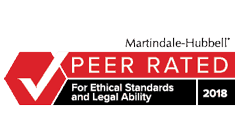Individuals who have suffered serious injuries because of hernia mesh products may be entitled to legal compensation from the companies who designed, manufactured, marketed, and sold these defective devices.
What is a hernia repair?
Hernia repair is the most common type of abdominal wall surgery performed. It is estimated that doctors perform over one million hernia procedures per year. A hernia occurs when internal organs push through the abdominal wall, causing discomfort or pain in the area. Hernias can affect men or women. Risk factors include obesity, genetic conditions, pregnancy, trauma to the bowel area or constant heavy lifting.
In the case of severe hernias, surgery is necessary to repair the abdominal wall. Doctors can utilize an open repair method with hernia mesh or laparoscopic surgery, which is a more sophisticated procedure.
The open repair method is done by using a mesh patch to close the abdominal hole. The purpose of the mesh is to allow the abdominal wall time to form scar tissue, thereby healing and reinforcing the weakened abdominal tissue. The patch must remain in place until tissue integration is complete, which can take several weeks.
Open repair surgery is the most common type of hernia mesh repair because it is considered an easier surgery that any general surgeon can perform.
Pharmaceutical device companies have seized on the fact that the open repair can be performed by any general surgeon in order to widely market their hernia mesh devices. There are 70-80 types of commercially available hernia meshes on the market.
Hernia Mesh – What goes wrong?
In general, hernia mesh implants are correlated to a whole host of problems. Many of the hernia mesh devices on the market are made from a material called polypropylene which is not meant to be directly exposed to internal tissue, nor used as a permanent implant in the human body. The most common problems arise because the material is known to contract, shrink and harden over time, as well as become embedded in tissue, migrate, and even perforate organs.
In an attempt to circumvent the known risk of polypropylene being harmful to tissue, medical device manufacturers used various coatings on some of their products which were supposed to provide a protective barrier for the tissue, allow time for the abdominal wall to heal around the mesh, and dissolve thereafter.
Unfortunately, it was discovered that some of these meshes were defective because the “protective” coatings dissolved well before the peritoneal tissue had time to heal, thereby exposing the patient’s internal organs directly to polypropylene. Some other designs were defective in that they would bend and fold under pressure; and in doing so, the polypropylene would once again have direct contact with the organ tissue. When this happens, dense gum-like adhesions between the bowel and the polypropylene can form, causing chronic pain, in addition to fistulas and organ loss.
When a mesh fails, the patient will typically require a subsequent surgery to remove the defective mesh (referred to as a revision surgery) and repair the hernia. Sometimes, due to the previously mentioned eroding, embedding and migration, it is not possible to remove the mesh in its entirety, which leaves patients with life-long injuries.
It is evident that some hernia mesh manufacturers knew their devices would not work as intended, but hid that information from the public. Some of them continued to manufacture the product while others silently recalled their devices without notifying consumers that they had a defective device sitting in their abdominal wall. It is also important to note that the medical device manufacturers hid this information from doctors and surgeons who performed the implant procedures and whom they relied on to purchase their products.
Do I have a hernia mesh claim?
You may have a claim if you have had a hernia mesh device implanted and suffered one or more of the following injuries which resulted in a revision surgery:
- Chronic, severe abdominal pain
- Migration of the device into surrounding tissue (typically a doctor will have to diagnose)
- Tumor like foreign bodies caused by hardening of the migrated or contracted mesh
- Gastrointestinal issues (frequent diarrhea, constipation, nausea)
- Infection (including MRSA, sepsis)
- Seromas
- Bleeding
- Adhesions
- Bowel Obstruction
- Fistulas
- Painful sex
- Leg, groin and testicular pain
Hernia mesh devices most commonly associated with problems causing injuries to users are the following manufacturers and models:
Ethicon/Johnson & Johnson
- Physiomesh
- Proceed
- Prolene Hernia System (not to be confused with Prolene flat mesh)
Bard/C.R.Bard/Davol
- 3D Max (3DMaxLight)
- Bard Mesh (“Marlex Mesh,” “Bard Flat Mesh,” Bard Keyhole Mesh)
- Composix (Composix E/X, Composix Kugel)
- Kugel
- Modified Kugel Patch (MK Patch)
- Parastomal Patch
- Ventralex (VentralexST)
- Ventralight (VentralightST,
VentralightST with Echo)
- Perfix (Perfix Light, Perfix Plug)
- Speramesh IP Composite
- Spermatex
- Ventrio (VentrioST)
- Visilex
Medtronic
- Parietene
- Parietex
- Surgipro
- Symbotex
Hernia mesh implants from additional companies including Covidien (Symbotex hernia mesh), Atrium (C-Qur hernia mesh) and Gore (DualMesh Plus) have also been linked to serious injury.
What should I do if I think I have a claim?
- Obtain the surgical report (specifically including your implant sticker) from your hernia surgery to determine what kind of hernia mesh you had implanted. The implant sticker can most commonly be obtained from the hospital where the surgery was performed (as opposed to from the doctor’s office who performed it).
- If you have had a revision surgery, or will have one in the future, ask the doctor and hospital in writing to preserve any mesh implant components they remove and any tissue or pathology specimens they take, as this information will help prove your case.
- Act quickly! Most claims have a statute of limitations, meaning a period of time that you can bring your claim before it is barred forever. The period of time to bring a product liability claim varies depending on many factors, so you need to talk to a legal professional who can properly advise you.
FAQ

.svg)
.avif)









